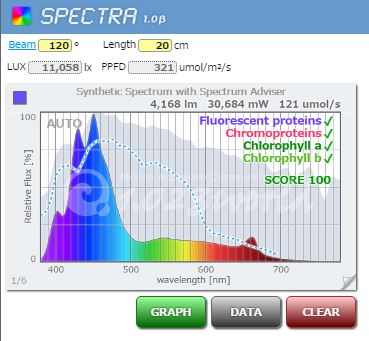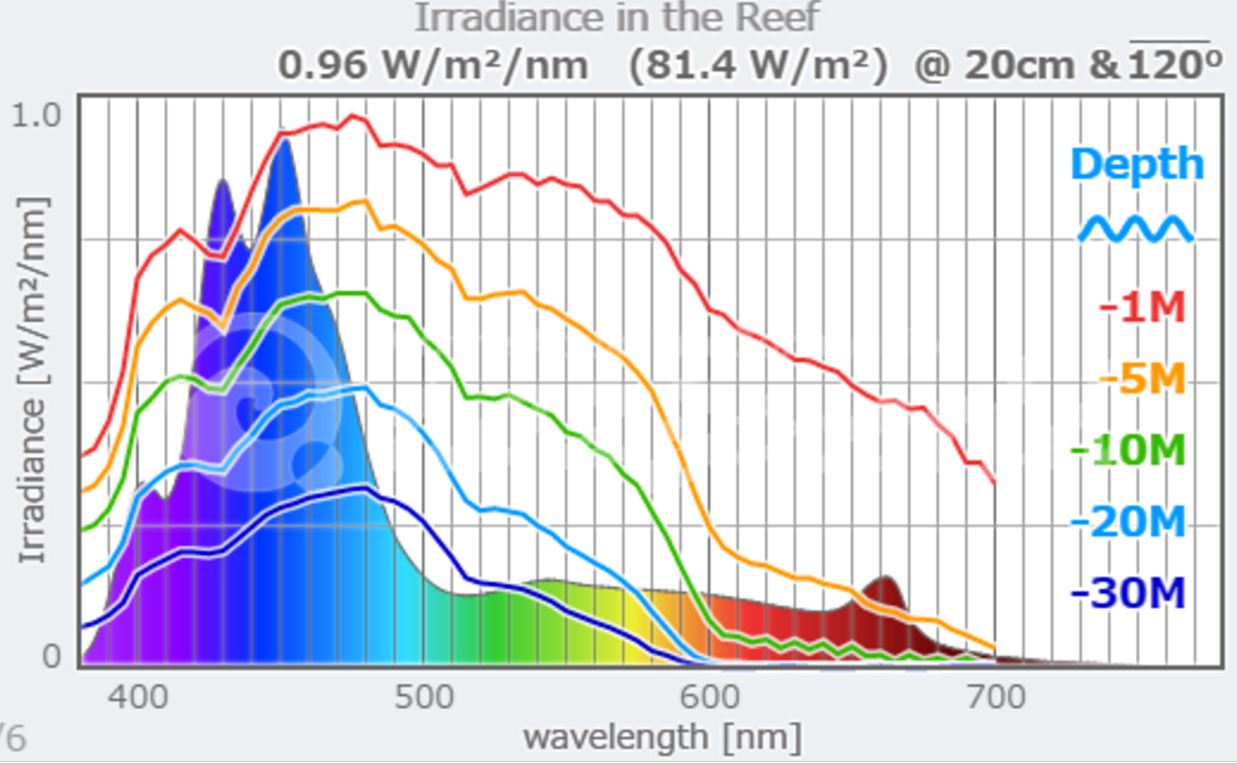With Dana on the Lighting Forum, I've seen more spectrum talk lately and the realization by many that a truly accurate spectrometer is not cheap! Here is a nifty little program that might help those looking to create and/or validate their current LED arrays (especially handy for DIY'ers).
A while back when I was putting together my DIY LED array, I was looking for a way to verify spectrum and intensity without an expensive spectrometer. This SPECTRA website was quite helpful in validating that my initial selection and intensity of the LEDs was close (I used the content from Dmitry & Vahe's excellent Advanced Aquarist article to come up with the proper spectra and intensities: http://www.advancedaquarist.com/2012/10/aafeature). One must know (or have access to) the specs for the individual types of LEDs used (and number, of course) and then intensity for the types of LEDs can be manipulated to optimally hit the photosynthesis peaks, as well as sufficient stimulation of the fluorescent and chromo proteins. The program will tell you how close you are to 'optimal' (aka 'SCORE 100'):
http://spectra.1023world.net/
My original array's data input produced 'SCORE 97%'. A small increase in the deep red (via red 670nm LEDs) then brought it to 'SCORE 100':

The program will even show you how your spectrum compares to light at various depths in the ocean:

I've been running with this for ~1 - 1/2 years now with just some minor adjustments...and the corals seen to like it just fine.
While I can't vouch for the accuracy (need a good spectrometer to compare), I can say that my initial research into the type of light required (which determined the particular LEDs to use, the intensities required and the expected graphical representation), matched quite well with the program's graphical output. Based on this, it appears to me that the program's individual LED spectrum data was compiled from accurate spectrometer readings. Picking nits, what the program can't account for, however, is the wavelength binning differences of the individual diodes. But for getting 'in the ballpark', it's pretty good IMO.
Ralph -
A while back when I was putting together my DIY LED array, I was looking for a way to verify spectrum and intensity without an expensive spectrometer. This SPECTRA website was quite helpful in validating that my initial selection and intensity of the LEDs was close (I used the content from Dmitry & Vahe's excellent Advanced Aquarist article to come up with the proper spectra and intensities: http://www.advancedaquarist.com/2012/10/aafeature). One must know (or have access to) the specs for the individual types of LEDs used (and number, of course) and then intensity for the types of LEDs can be manipulated to optimally hit the photosynthesis peaks, as well as sufficient stimulation of the fluorescent and chromo proteins. The program will tell you how close you are to 'optimal' (aka 'SCORE 100'):
http://spectra.1023world.net/
My original array's data input produced 'SCORE 97%'. A small increase in the deep red (via red 670nm LEDs) then brought it to 'SCORE 100':

The program will even show you how your spectrum compares to light at various depths in the ocean:

I've been running with this for ~1 - 1/2 years now with just some minor adjustments...and the corals seen to like it just fine.
While I can't vouch for the accuracy (need a good spectrometer to compare), I can say that my initial research into the type of light required (which determined the particular LEDs to use, the intensities required and the expected graphical representation), matched quite well with the program's graphical output. Based on this, it appears to me that the program's individual LED spectrum data was compiled from accurate spectrometer readings. Picking nits, what the program can't account for, however, is the wavelength binning differences of the individual diodes. But for getting 'in the ballpark', it's pretty good IMO.
Ralph -
Last edited:
















